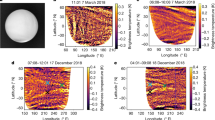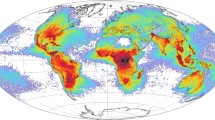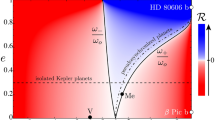Abstract
OPTICAL tracking of Earth satellites is the only means of determining their motion with such precision as to render measurements of air density significant. This, however, can only be done when the satellite is sunlit, considering that a flashing beacon (which has been suggested) would relatively quickly run out of power. I shall discuss the insolation of Earth satellites revolving on orbits similar to those of the Russian Sputnik.
This is a preview of subscription content, access via your institution
Access options
Subscribe to this journal
Receive 51 print issues and online access
$199.00 per year
only $3.90 per issue
Buy this article
- Purchase on Springer Link
- Instant access to full article PDF
Prices may be subject to local taxes which are calculated during checkout
Similar content being viewed by others
Author information
Authors and Affiliations
Rights and permissions
About this article
Cite this article
ABBOTT, W. Seasonal Illumination of a Circumpolar Earth Satellite at its Extreme-Latitude Orbit Point. Nature 182, 651–652 (1958). https://doi.org/10.1038/182651a0
Issue Date:
DOI: https://doi.org/10.1038/182651a0
Comments
By submitting a comment you agree to abide by our Terms and Community Guidelines. If you find something abusive or that does not comply with our terms or guidelines please flag it as inappropriate.



